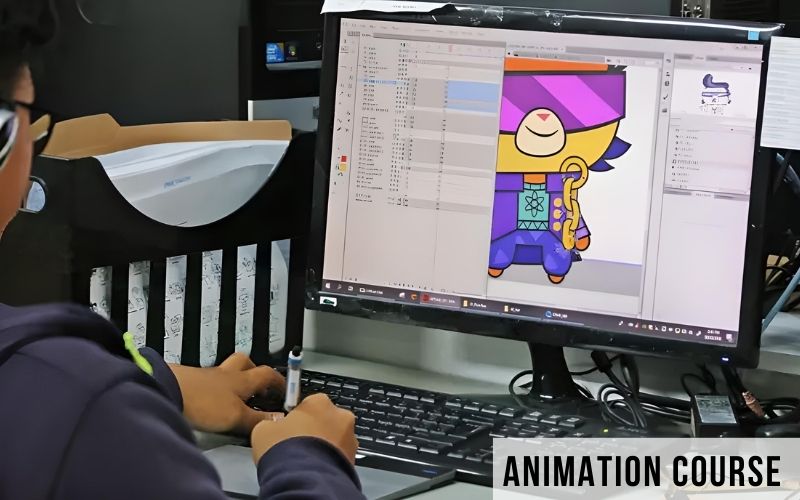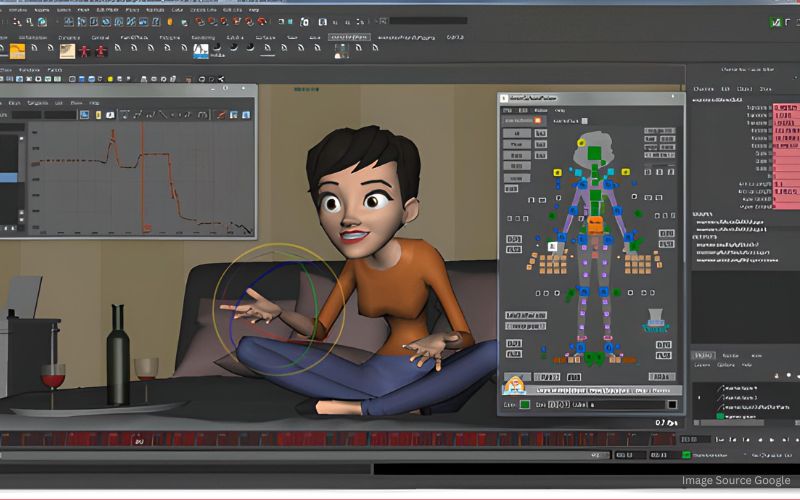Comprehensive Animation Courses: Delving into Skills and Specializations
Table of Contents
# How Do Animation Courses from The Best Animation Institute Help in Furnishing and Developing Your Animation Skills?
# What Are Some of The Concentrations Offered When Pursuing an Animation Course?
# How Can You Locate the Best Animation Colleges in Kolkata?
# Conclusion
A career in animation is an enticing choice, especially if you have a profound enthusiasm for the arts, photography, painting, and unrestrained creativity. These capabilities, along with a variety of other dynamic visual abilities that create the always changing terrain of this exciting sector, can be effectively combined and displayed in the domain of animation and multimedia.
Animation breaks free from the limitations of traditional artistic expression; it is a bright and dynamic technique that gives characters and objects life, forcing them to move through three-dimensional spaces and draw viewers into breathtaking stories.
In this blog, we will delve into the ways by which animation courses help in furnishing and developing your animation skills and Concentrations Offered When Pursuing an animation course.
How Do Animation Courses from The Best Animation Institute Help in Furnishing and Developing Your Animation Skills?
Animation courses from the best animation institute are designed to provide a structured and comprehensive learning environment that helps students develop and refine their animation skills.
Here’s how animation courses can help in furnishing and developing your animation skills:
Fundamental Knowledge:
Animation courses start by providing a solid foundation in the principles of animation. Students learn essential concepts such as timing, spacing, weight, and exaggeration, which form the basis of creating believable and visually appealing animations.
Understanding these principles is crucial for animators to effectively bring characters and objects to life.
Technical Skills:
Animation courses focus on teaching students the technical skills required to create animations. This includes hands-on training with industry-standard software and tools used in animation, such as 2D and 3D animation software, digital drawing tablets, and rigging systems.
Students learn how to navigate the software, utilize different animation techniques, and work with various features and functions.
Hands-on Practice:
Animation courses provide ample opportunities for hands-on practice. Students engage in animation exercises and projects that allow them to apply the knowledge and techniques they learn in class.
Through regular practice, they develop their animation skills, refine their understanding of the principles, and gain experience in tackling different animation challenges.
Critique and Feedback:
One of the valuable aspects of animation courses is the feedback and critique provided by instructors and peers. Students present their work-in-progress animations, and instructors offer constructive feedback on aspects such as timing, posing, arcs, and overall execution.
Critiques help students identify areas for improvement, gain insights into their work, and refine their animations based on expert guidance.
Specialization and Elective Courses:
Many animation courses offer specialization or elective options that allow students to focus on specific areas of interest. These could include character animation, visual effects, motion graphics, game animation, or experimental animation.
By choosing specialized courses, students can further hone their skills in specific animation domains, catering to their career aspirations or personal preferences.
Industry Insights and Guest Speakers:
Animation courses often invite guest speakers from the industry, such as professional animators, directors, or studio representatives. These industry experts share their experiences, insights, and tips, providing students with a broader understanding of the animation industry.
Guest speakers may also offer practical advice on career development, industry trends, and portfolio building.
The structured learning environment and guidance from experienced instructors contribute to the continuous improvement and growth of students’ animation abilities.
What Are Some of The Concentrations Offered When Pursuing an Animation Course?

When pursuing an animation course, you may have the opportunity to specialize in specific concentrations or focus areas within the field of animation. The availability of concentrations can vary depending on the institution and program you choose.
Here are some common concentrations or focus areas offered in animation courses:
Environmental Animation:
This concentration focuses on animating natural and environmental elements such as landscapes, weather effects, and organic forms. Students learn techniques to create lifelike environments, atmospheric effects, and dynamic natural phenomena in their animations.
Documentary Animation:
Concentrating in documentary animation involves the fusion of animation and documentary storytelling. Students learn to combine factual information and storytelling techniques through animation to create engaging and informative documentary films or series.
Medical Animation:
A concentration in medical animation combines animation and scientific visualization to create educational or promotional content for the medical and healthcare industries. Students learn to accurately represent medical concepts, procedures, and anatomy through animation, aiding in medical education, research, or marketing.
Advertising and Commercial Animation:
Concentrating in advertising and commercial animation prepares students for careers in creating animated content for commercials, advertisements, or promotional campaigns. Students learn to craft persuasive and visually compelling animations tailored to specific target audiences and marketing goals.
Experimental 2D Animation:
This concentration delves into unconventional and artistic approaches to 2D animation. Students explore various techniques, such as hand-drawn animation, mixed media, collage, or paint-on-glass animation, to create unique and visually striking animations.
Social Media Animation:
With the rise of social media platforms, this concentration focuses on creating animations optimized for social media channels. Students learn techniques for short-form animations, GIFs, and visually engaging content that grabs attention and resonates with online audiences.
Narrative Animation:
Concentrating on narrative animation emphasizes the development of storytelling skills through animation. Students learn to craft engaging narratives, build compelling characters, and structure cohesive story arcs within their animations.
Broadcast Animation:
Concentrating in broadcast animation involves creating animated content for television broadcasting. Students learn techniques for producing animations that meet broadcast standards and requirements, such as show intros, commercials, or animated segments for TV programs.
Data Visualization Animation:
This concentration explores the use of animation for visualizing complex data and information. Students learn to transform data sets into compelling and easy-to-understand animations, enabling audiences to grasp and interpret information more effectively.
How Can You Locate the Best Animation Colleges in Kolkata?
If you want to get enrolled in the best animation colleges in Kolkata then check out for the highly reviewed animation colleges in Kolkata such as George Animatrix. George Animatrix is one of the highly reviewed animation colleges in Kolkata with the greatest number of students enrolled in animation courses from across the globe.
Conclusion
To wrap up, pursuing a career in animation offers a gateway to a world where creativity knows no bounds. Animation courses serve as a catalyst for nurturing and developing your animation skills, providing a structured learning environment that combines fundamental knowledge, technical expertise, hands-on practice, and valuable feedback. With a wide range of concentrations available, you can specialize in areas such as environmental animation, documentary animation, medical animation, advertising and commercial animation, and more.


